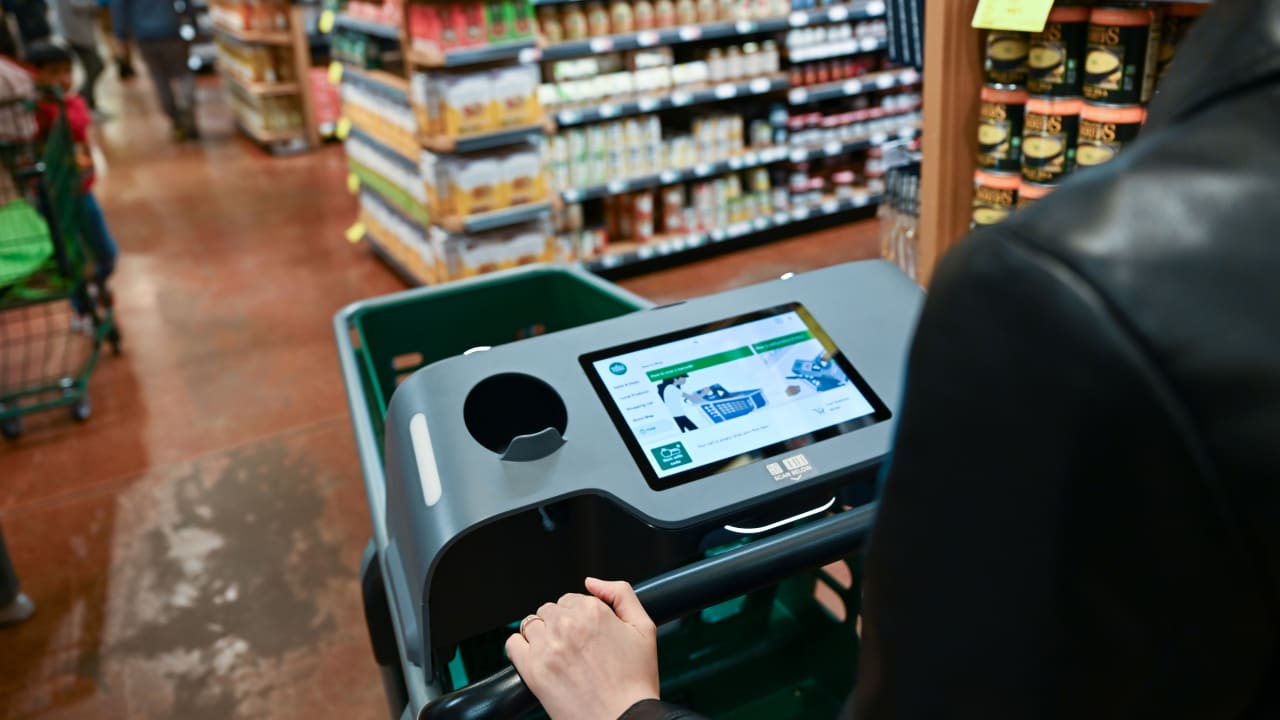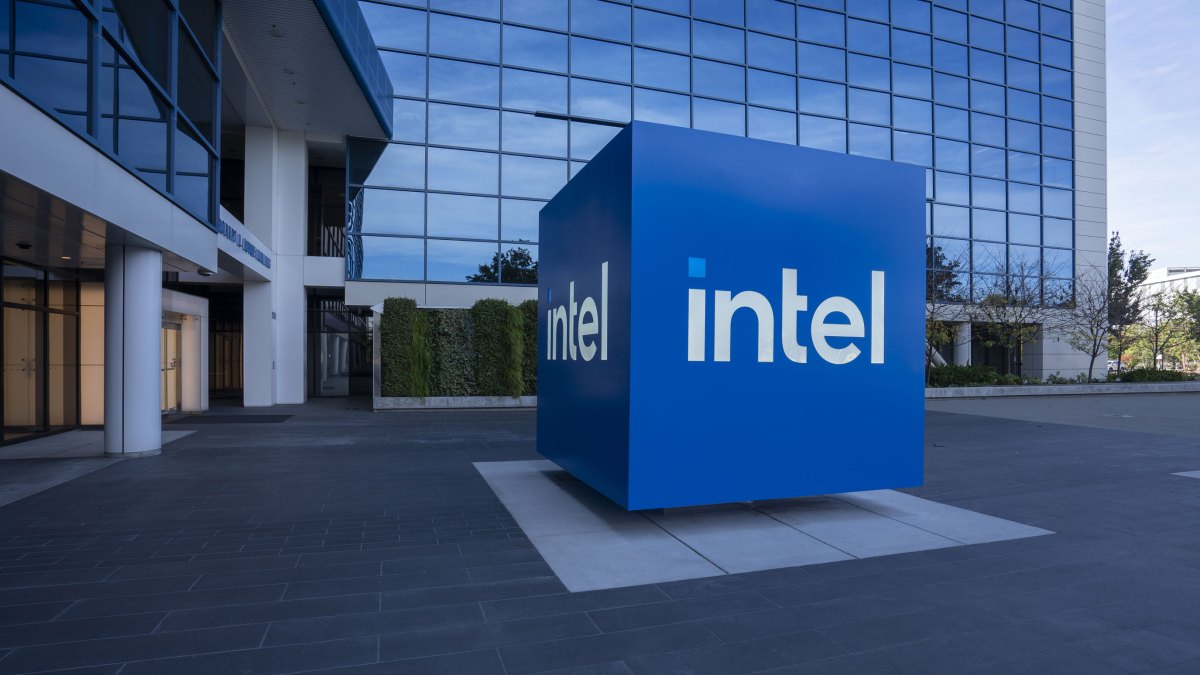Why Amazon’s Dash Carts might have a tough time finding customer buy-in
Amazon’s announcement last week that it was ditching its Just Walk Out technology from its U.S. Fresh stores, which allowed customers to shop and leave without checking out through a register, came with an interesting silver lining: The tech behemoth was replacing that technology with another shopping innovation, this time revolving around the shopping cart itself. As part of last week’s news, Amazon said it would be expanding its Dash Cart across all Amazon Fresh locations in the U.S., while relegating Just Walk Out to their smaller Go corner stores (the program will continue in all U.K. locations). Dash Carts contain built-in sensors and scanners that allow shoppers to register their purchases as they go. When done, the shopper is automatically charged as they walk out. While that might seem like a marginal improvement over the Just Walk Out experience, some experts are skeptical that Dash Carts will finally deliver Amazon to its IRL grocery promised land. “Training customers to do something, especially when they don’t think it’s their job to do it, is really difficult,” says Uttara Ananthakrishnan, an assistant professor of information systems at Carnegie Mellon University. Amazon’s not the first company to integrate smart-cart tech. Walmart, Kroger, and many retailers are also experimenting with shopping carts that use various forms of integrated technology. Amazon claims that their Dash Carts differ from these retailers because of their advanced cameras and sensors that can identify the item once customers put it in their shopping carts. Yet these fancy technological features have had limited success, with the Dash Cart accounting for only 11% to 15% of total shopping sessions in 2022, per Business Insider, rather than the 30% expected. Not only is the technology expensive to implement, but, from a customer’s perspective, it requires an up-front buy-in—involving the creation of an Amazon account and a QR code to scan into the store—that can seem more cumbersome than simply going to a cashier. Self-checkouts are already being phased out in many grocery stores worldwide, as customers would prefer not to be burdened with weighing and identifying products (tasks that a cashier would normally do). Dash Carts may very well run into the same sort of customer resistance, according to Ananthakrishnan. “A customer-facing product is only as good as how the customer ends up using the product,” she says. “And if the customer doesn’t know how to use it, it’s going to be not very useful.” As to Just Walk Out, an Amazon spokesperson says that the program remains a core focus for the brand. “There are more than 140 third-party Just Walk Out technology locations in the U.S., UK, Australia, and Canada—and we will open more Just Walk Out-enabled stores this year than any year prior—including at travel retailers, sports stadiums, entertainment venues, conference centers, theme parks, convenience stores, hospitals, and college campuses,” the spokesperson says. “This change does not impact third-party retailers using Just Walk Out technology.” Launched in 2016, Just Walk Out was supposed to completely reinvent the grocery shopping experience, offering an efficient, friction-free shopping process where shoppers could skip the dreaded experience of waiting in the checkout line or interacting with cashiers and fellow shoppers. Yet, the expensive technology proved to be error-prone, often providing late receipts and incorrect orders. Himanshu Jain, vice president of product management at CommerceIQ, speculates that Amazon may have opted to retain Just Walk Out in the Go stores because of their potential for data collection. “In my mind they’re keeping it as an experiment to continue to evolve the technology,” he says. Indeed, Amazon’s strength in data analytics does give them an advantage over other retailers when it comes to smart shopping carts. Dash Carts feature a built-in touch screen designed to help customers keep track of receipts and direct them to the location of products in the store. The screen also gives targeted recommendations. Of course, customers will need to actually use the carts for the tech to have a meaningful impact for Amazon.

Amazon’s announcement last week that it was ditching its Just Walk Out technology from its U.S. Fresh stores, which allowed customers to shop and leave without checking out through a register, came with an interesting silver lining: The tech behemoth was replacing that technology with another shopping innovation, this time revolving around the shopping cart itself.
As part of last week’s news, Amazon said it would be expanding its Dash Cart across all Amazon Fresh locations in the U.S., while relegating Just Walk Out to their smaller Go corner stores (the program will continue in all U.K. locations). Dash Carts contain built-in sensors and scanners that allow shoppers to register their purchases as they go. When done, the shopper is automatically charged as they walk out.
While that might seem like a marginal improvement over the Just Walk Out experience, some experts are skeptical that Dash Carts will finally deliver Amazon to its IRL grocery promised land.
“Training customers to do something, especially when they don’t think it’s their job to do it, is really difficult,” says Uttara Ananthakrishnan, an assistant professor of information systems at Carnegie Mellon University.
Amazon’s not the first company to integrate smart-cart tech. Walmart, Kroger, and many retailers are also experimenting with shopping carts that use various forms of integrated technology. Amazon claims that their Dash Carts differ from these retailers because of their advanced cameras and sensors that can identify the item once customers put it in their shopping carts. Yet these fancy technological features have had limited success, with the Dash Cart accounting for only 11% to 15% of total shopping sessions in 2022, per Business Insider, rather than the 30% expected.
Not only is the technology expensive to implement, but, from a customer’s perspective, it requires an up-front buy-in—involving the creation of an Amazon account and a QR code to scan into the store—that can seem more cumbersome than simply going to a cashier. Self-checkouts are already being phased out in many grocery stores worldwide, as customers would prefer not to be burdened with weighing and identifying products (tasks that a cashier would normally do). Dash Carts may very well run into the same sort of customer resistance, according to Ananthakrishnan. “A customer-facing product is only as good as how the customer ends up using the product,” she says. “And if the customer doesn’t know how to use it, it’s going to be not very useful.”
As to Just Walk Out, an Amazon spokesperson says that the program remains a core focus for the brand. “There are more than 140 third-party Just Walk Out technology locations in the U.S., UK, Australia, and Canada—and we will open more Just Walk Out-enabled stores this year than any year prior—including at travel retailers, sports stadiums, entertainment venues, conference centers, theme parks, convenience stores, hospitals, and college campuses,” the spokesperson says. “This change does not impact third-party retailers using Just Walk Out technology.”
Launched in 2016, Just Walk Out was supposed to completely reinvent the grocery shopping experience, offering an efficient, friction-free shopping process where shoppers could skip the dreaded experience of waiting in the checkout line or interacting with cashiers and fellow shoppers. Yet, the expensive technology proved to be error-prone, often providing late receipts and incorrect orders.
Himanshu Jain, vice president of product management at CommerceIQ, speculates that Amazon may have opted to retain Just Walk Out in the Go stores because of their potential for data collection. “In my mind they’re keeping it as an experiment to continue to evolve the technology,” he says. Indeed, Amazon’s strength in data analytics does give them an advantage over other retailers when it comes to smart shopping carts. Dash Carts feature a built-in touch screen designed to help customers keep track of receipts and direct them to the location of products in the store. The screen also gives targeted recommendations.
Of course, customers will need to actually use the carts for the tech to have a meaningful impact for Amazon.






















